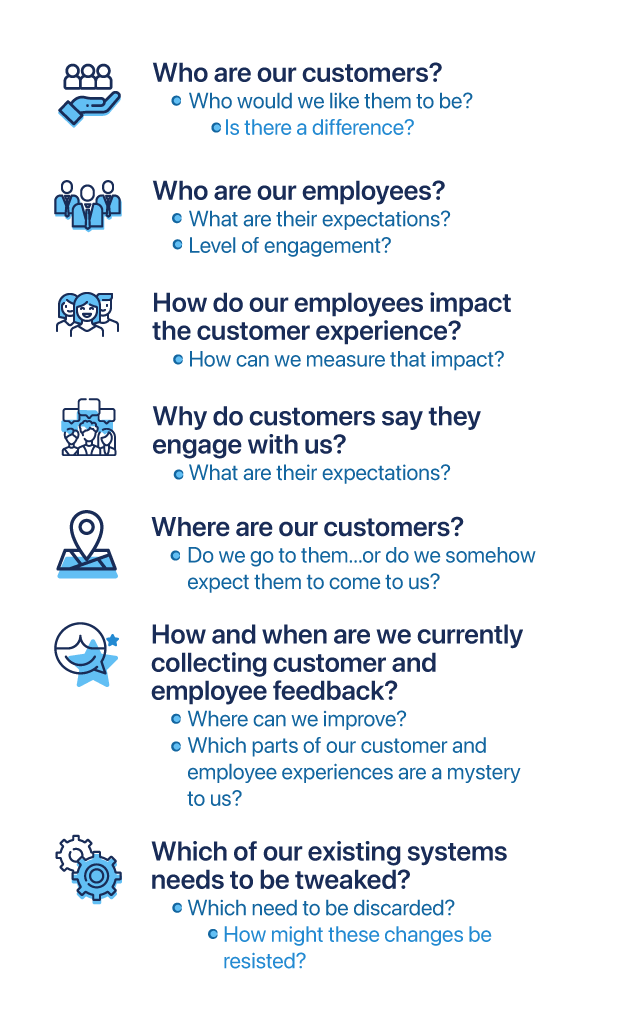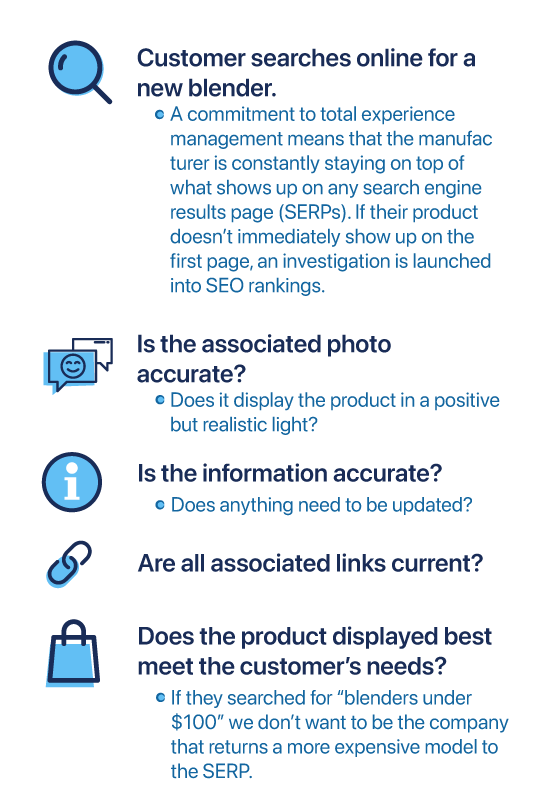While many of us may not have heard the term “experience management” until very recently, we’re all hard-wired with a deep understanding of its effects.
All of us also possess an intuitive understanding of what it looks and feels like when any business or individual has made a far-reaching commitment to providing us with positive experiences. Whenever we are so pleased by a business transaction that we simply must tell others about it, that is an indicator that someone, somewhere, cares very deeply about providing quality customer service.
In effect, we become unpaid cheerleaders for a product or service.These unpaid advocates — or “superfans,” as we like to call them — can create enormous impact on a company’s reputation and revenue In the last 20 years, social media has greatly extended the reach of our voices, so a strong vote of confidence from even one person can have far-reaching, beneficial effects.
Unfortunately, whenever we experience a substandard commitment to providing consistently positive customer experiences, we know what that feels like, too. Once again, we will feel compelled to speak out. Sadly, though, we will be quick to tell anyone who will listen not to buy that product or service, and social media yet again amplifies our voice.
Savvy business owners are well aware that today’s tech-filled landscape provides the perfect setting for them to be “found out” in terms of customer service. Research has shown that shoppers are inclined to believe whatever they read about our businesses online, positive or negative. Seismic shifts in the marketplace have given rise to the need for businesses of all kinds to take a serious look at investing in an experience management platform.
TABLE OF CONTENTS
→ A Quick Definition of Experience Management
→ No, Experience Management Is Not the Same Thing as “Customer Service”
→ Two Important Steps Toward Implementing Experience Management
→ When — Not If — the Time Arrives to Implement an Experience Management Platform
→ Meet Your Customers Wherever They Want to Meet You
→ Experience Management Leverages Real-Time Feedback
→ Experience Management Provides Staff with Actionable Responses
→ Understanding the Increased Granularity Associated with Total Experience Management
→ With Granularity Comes a Corresponding Need for Automation
→ If You Care About Your Reputation, Then You Care About Experience Management
A Quick Definition of Experience Management

The simplest possible explanation for what constitutes total experience management is an ongoing commitment to continually improve the experiences of individuals at every stage of their interaction with our product or service.
The key phrase there is “at every stage.” In other words, experience management seeks to make improvements whenever and wherever an individual has a point of contact with our business.
While many (perhaps most) businesses are very interested in the experiences of a customer or client, total experience management cares about everyone’s experience of your business. This includes employees and management, yes, but can go even further than that. Total experience management might seek to positively improve the perceptions of vendors, suppliers, neighboring businesses, the local community, etc.
Experience management doesn’t seek to silence critics or control narratives. Instead, the successful implementation of an experience management platform helps businesses respond (in real-time) to issues with the goal of meeting or exceeding expectations. Your business will always have critics, but insights gained from an experience management program and platform can transform your way of doing things such that critical voices become demonstrably false.
No, Experience Management Is Not the Same Thing as “Customer Service”

Nearly every business has some form of customer service, either formal or informal. Generally speaking, customer service engages with a customer whenever he or she initiates contact. The customer has a question, complaint, or need for information and reaches out to the business looking for assistance.
Experience management, on the other hand, is far more proactive. An organization operating with a well-oiled experience management platform will initiate the feedback loop without seeming intrusive or annoying. There’s a balance to be struck and it takes a great deal of discernment to set up an effective experience management feedback loop.
An experience management platform also makes use of insights provided by staff members. Experience data can come from any source, really, but your business committing to consistently excellent products or services presupposes a corresponding commitment to employee engagement. Employee experience can often be tapped as one of the richer sources of data, but that too presupposes that your staff has been encouraged to speak up.
Two Important Steps Toward Implementing Experience Management

1. Secure total buy-in as early as possible.
Oftentimes the most difficult part of switching from traditional forms of customer service to an experience management platform is breaking out of companywide traditions and siloed thinking. Employee engagement will be crucial long before any new platform, systems, or procedures are rolled out. Keeping your staff in the dark until it’s too late to provide feedback will demonstrate a less-than-stellar commitment to employee experience.

Because an experience management platform quite literally impacts every employee, it’s commonplace to run into some variation on the theme, “But we’ve always done it this way.” Staff who have little to no direct contact with customers (or even other employees who do) may need some convincing to help them see the bigger experience management picture. Practical outworkings of how you plan to use the experience data collected will be your best friend here.
Once you’ve secured buy-in from everyone, the next step will be considerably easier. You now need to rethink every step of a customer’s journey with your business.
2. Question everything.

Any thorough implementation of any experience management platform will have already asked and satisfactorily answered several questions. Entrenched company training may tempt some to reiterate what they already think they know about their customers. However, moving to the next level of customer and employee experience will require a fresh approach.
As you question everything, it will be important to use soft skills to reassure your employees. If you sense that your questions are in any way perceived as a threat to one’s livelihood, the game is lost. Approach with caution. Sample questions to revisit and revise might include:

Again, these are just starter questions for you to use to prime the pump in your setting. Taking time to ask questions — and even question the questioners — will pay off when your company uses these insights to begin the task of finding an experience management platform that will meet the critical needs in your particular niche.

When — Not If — the Time Arrives to Implement an Experience Management Platform

Anyone trying to collect and analyze data by hand these days is likely to be overwhelmed within the first 10 minutes. Never before has so much data been flying around at light speed, so any attempt to keep up without automation is more or less doomed. It simply can’t be done. By the time you have manually collected data from a customer or employee experience and analyzed that data, the experience is already a memory.
Operationalizing an experience management program with an online platform is the smart way to gather and manage experience data around individual experiences, at scale. The ability to automate collecting customer and employee feedback, analyze, and take action, removes manual effort so your team can focus on providing the best experiences possible – not remembering to email surveys or forward complaints for escalation.
XMP helps businesses architect quality experiences in real-time. They enable customers and employees to provide instantaneous feedback using their preferred means of communication. An Experience Management Platform, rightly deployed, gives customers a sense of empowerment in situations where they might previously have felt helpless.
Meet Your Customers Wherever They Want to Meet You

In a bygone era, businesses advertised in newspapers, magazines, radio, and television. While those traditional venues still retain value for specific market segments, it doesn’t take much research to conclude that the media landscape has shifted dramatically. A business might advertise heavily in all four of the traditional mediums listed above and still miss a huge chunk of its customer base.
When thinking strategically about experience management, it’s vital to interact with your customers in their medium of choice, not yours. More than one business owner has been unpleasantly surprised after a busy week to find that a disgruntled customer began a scorching “flame” on social media that went unaddressed and gave rise to a pile-on session.
Experience Management Leverages Real-Time Feedback

The key difference between customer feedback and total experience management can be summed up in one word: immediacy.
Leveraging digital technologies, businesses are now able to unobtrusively “walk alongside” a customer throughout his or her experiences. For example, after checking into a hotel, a customer might receive an immediate text message if the check-in experience met or exceeded expectations, along with an opportunity to provide a quick overall rating.
After the customer uses a key card to access their room for the first time, they might be given a few minutes to inspect the facilities. They then receive a second text message asking if the room is clean and up to their standards. By requesting low-effort responses from customers, businesses gain instantaneous feedback and insights. They are also able to follow up immediately and create outstanding, personalized experiences that build relationships with and attract new customers.
Experience Management Provides Staff with Actionable Responses

Another feature that distinguishes full-cycle experience management from more traditional forms of customer feedback is that — because it provides information in real-time – employees have the ability to respond appropriately. Efforts to correct a problem or improve an experience can be implemented without delay. Even if addressing an issue will take time, customers have an opportunity to be impressed by how quickly your people jump on it.
In the not-too-distant past, a customer might have received an email evaluation from a hotel chain once their stay had ended. At that point, the customer might have thought to include a comment such as “The ice machine on our floor was out of order the entire time.” As the feedback was received after the fact, this evaluation process, while still valuable, provided no opportunity to make it right for that specific customer.
Experience management presupposes that addressing issues in hindsight isn’t good enough. The same hotel guest uses his smartphone to send a quick text message and, to his surprise, the ice machine is fixed or replaced during his stay.
Understanding the Increased Granularity Associated with Total Experience Management
By the time many customers are offered an opportunity to provide feedback, it’s often too late to positively shape their experience. Sending a follow-up email after making a sale is good, but it’s not enough. Comment cards printed on paper have their place, of course, but they too are insufficient for embracing experience management as a core value. Total experience management takes the feedback process and breaks it down into smaller, more digestible chunks.

For example, let’s say that a customer decides that her home needs a new blender. She does not have time to go out shopping, so she searches online for products that fit her style and price point. She finds something that seems suitable and clicks over to the vendor’s website. Scrolling through the options she is able to quickly make a decision and place an order. Sometime later, the blender arrives on her doorstep. She unpacks it from its shipping container, plugs it in, and takes it for a quick test spin. Satisfied, she goes about her day. Weeks later, she uses the blender to make milkshakes and it performs flawlessly.
In the example above, a feedback card probably was included in the blender packing materials, but it may well have been recycled along with the shipping container. The moment that mattered most — her successful making of milkshakes — is lost to the manufacturer. Was she pleased? We’ll probably never know.
For our purposes of understanding total experience management, let’s break down the blender-buying experience into every single touchpoint over which a business has some level of control. Old blender breaks? Zero control. Does the customer think about buying a new one? Zero control. Everything after that represents an opportunity to excel.

Keep in mind…all of these issues are associated only with what shows up in the search. The prospective customer hasn’t even clicked through to your site yet, let alone begun interacting with your company.
Like it or not, the ability to use experience management to influence perception has already begun.
With Granularity Comes a Corresponding Need for Automation
Obviously, there’s a great deal of exhaustive detail to be addressed at every point during a customer’s experience management journey. Using the example above, other major points of contact for the “simple” purchase of a blender include the following.

Accurate billing. Zero surprises.

Immediate estimate of shipping and delivery dates.

Ability to track the status of an order at any time.

Safe and reliable delivery mechanisms.

The outward appearance of the packaging.

The experience of opening the package.

Clear, straightforward instructions in multiple languages.

Care and maintenance.

Customer engagement outreach post-sale.
Once a management team begins to enumerate the sheer number of times a single customer experiences a point of contact with their business, the immediate pushback tends to be to think about the number of employees it would take to keep up with just one person’s experiences. Prior to the tech-saturated culture of today, this would be a legitimate concern.
Today, however, any business can bring a high level of automation to the experience management process. Customers are carrying more computing horsepower in their pockets than ever before. Customer-focused experience management harnesses the power of tech to “meet” a customer at every major point in his or her experience.
If You Care About Your Reputation, Then You Care About Experience Management

The reputation your business wants to cultivate is one that gives customers a high level of confidence that if there is an unaddressed problem, it’s only because you don’t know about it. When customers experience an environment where feedback prompts immediate action, they begin to take your commitment to quality service seriously.
While every business will have to interact with impossible-to-please customers, the vast majority of people understand that mistakes or missed opportunities are a part of life. What impresses customers and sets your business apart from others is the tenacity with which we seek to pursue continuous improvement.
If your business has yet to begin the transition away from after-the-fact customer feedback to real-time, actionable response mechanisms, there is a real danger of your competitors gaining a significant edge. Once the exclusive domain of big-name corporations, experience management solutions are increasingly being tailored to answer the needs of smaller businesses. The day isn’t far off when customers will come to expect experience management-level service everywhere. Don’t wait for them to ask for it.












